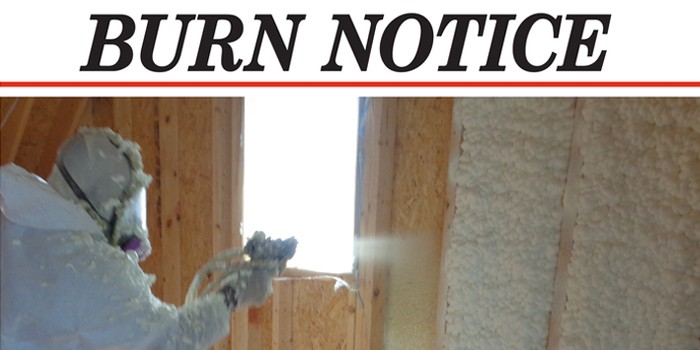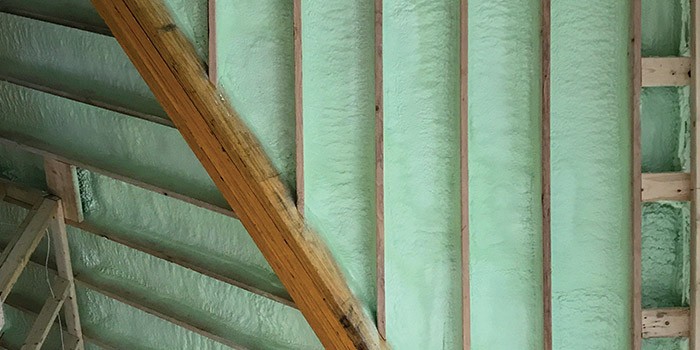
Profoam Discusses Benefits of Appendix X Approved Spray Polyurethane Foam
RUTLEDGE, GA – October 27, 2015 – Attic and crawl space insulation are some of the most common applications in the spray foam industry. A critical component in each of these applications is the installation of a thermal or ignition barrier to separate the foam insulation from the interior space of a building. However, spray foam products can be installed in attics and crawl spaces without an ignition barrier, provided they passed specified testing requirements. In recent years, a number of new ignition barrier-forgoing SPF insulation products have hit the market, allowing contractors to take advantage of substantial savings on materials.
RELATED Icynene ProSeal Eco Closed-Cell Spray Polyurethane Foam Wins Home Builder Executive 2015 Innovation Award, Spray Foam Manufacturer Partners with Washington University Graduate Architecture Students, Spray Polyurethane Foam Plays a Role in the Modernization of a Historic New Mexico Building, Revolution Machinery Reveals Key Factors Affecting Proportioner Performance
THERMAL AND IGNITION BARRIERS
Because spray polyurethane foam is a flammable material, thermal and ignition barriers are crucial to the safety of building occupants in the event of a fire. International Building Code (IBC) 2603.4 and International Residential Code (IRC) R316.4 both stipulate that plastic insulation like spray foam must be separated from the interior space of a building, and there are numerous ways in which separation is implemented.
To read the full article on Spray Foam Magazine, please click on the link provided below.
RELATED Icynene ProSeal Eco Closed-Cell Spray Polyurethane Foam Wins Home Builder Executive 2015 Innovation Award, Spray Foam Manufacturer Partners with Washington University Graduate Architecture Students, Spray Polyurethane Foam Plays a Role in the Modernization of a Historic New Mexico Building, Revolution Machinery Reveals Key Factors Affecting Proportioner Performance
THERMAL AND IGNITION BARRIERS
Because spray polyurethane foam is a flammable material, thermal and ignition barriers are crucial to the safety of building occupants in the event of a fire. International Building Code (IBC) 2603.4 and International Residential Code (IRC) R316.4 both stipulate that plastic insulation like spray foam must be separated from the interior space of a building, and there are numerous ways in which separation is implemented.
To read the full article on Spray Foam Magazine, please click on the link provided below.














